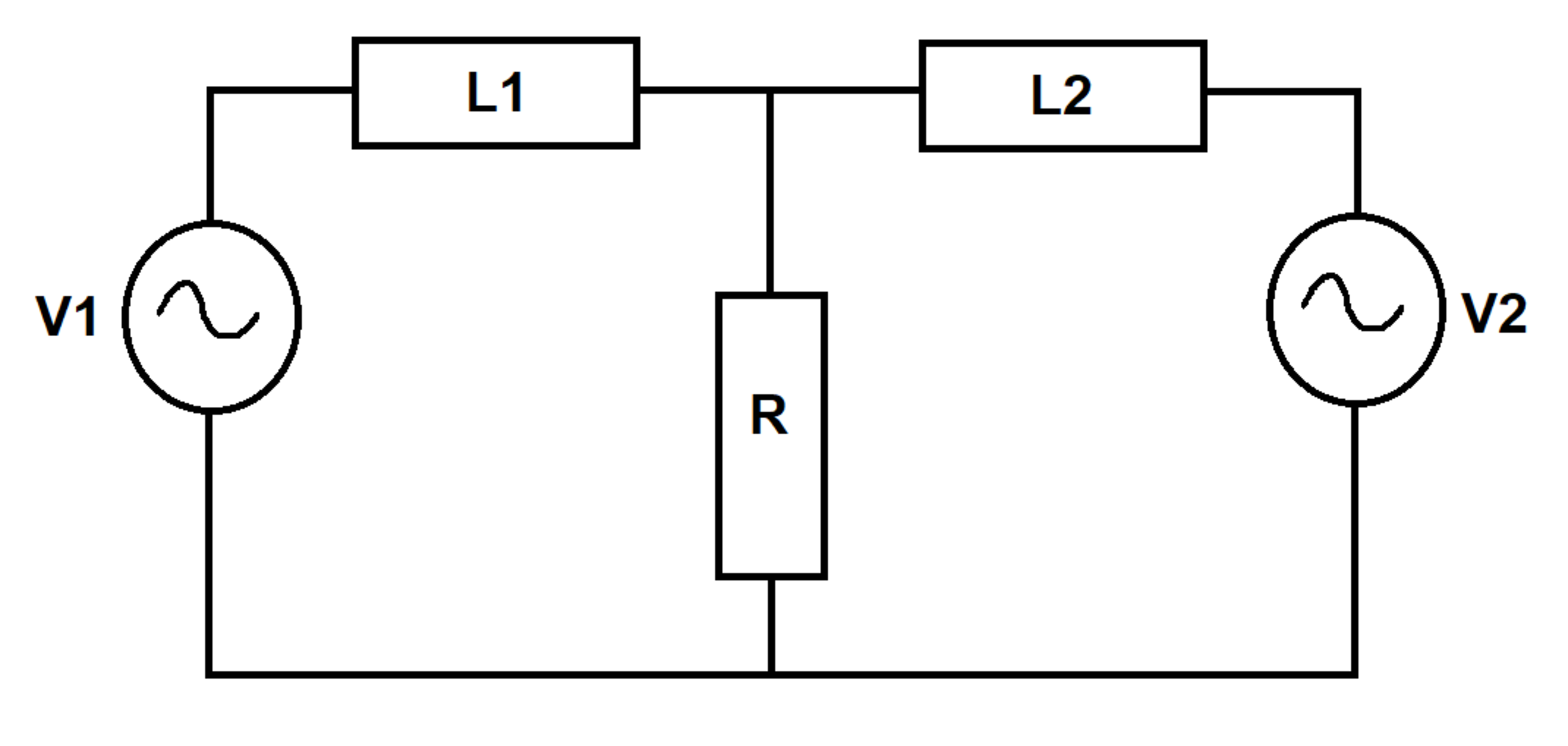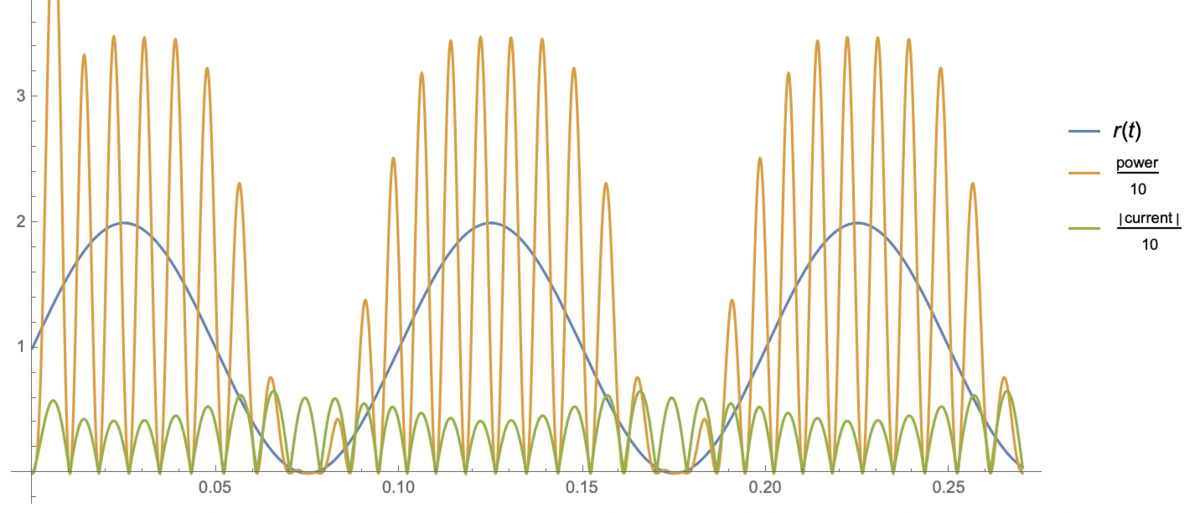AC with Variable RL (2-19-2021)
Two AC voltage sources excite an circuit as shown. The resistor value varies with time. At time , there is no current flowing in the inductors.
How much energy is dissipated in the resistor between and ?
Bonus: Is energy conserved in this circuit? Broadly speaking, how does the resistor power dissipation depend on the resistance value?
Details and Assumptions:
1)
(source angular frequency)
2)
(angular frequency of resistor variation)
3)
4)
5)
6)
7)

The answer is 1.2147.
This section requires Javascript.
You are seeing this because something didn't load right. We suggest you, (a) try
refreshing the page, (b) enabling javascript if it is disabled on your browser and,
finally, (c)
loading the
non-javascript version of this page
. We're sorry about the hassle.

Set source current due to V 1 be I 1 and that due to V 2 be I 2 . Then:
L 1 I ˙ 1 + R ( I 1 + I 2 ) = V 1 … ( 1 ) L 2 I ˙ 2 + R ( I 1 + I 2 ) = V 2 … ( 2 ) I 1 ( 0 ) = I 2 ( 0 ) = 0
We are asked to compute:
H = ∫ 0 0 . 1 R ( I 1 + I 2 ) 2 d t
This problem has been handled numerically, details of which are shown in the code below.
As for energy analysis, multiply (1) by I 1 d t and (2) by I 2 d t and add:
V 1 I 1 d t + V 2 I 2 d t = L 1 I 1 d I 1 + L 2 I 2 d I 2 + R ( I 1 + I 2 ) 2 d t ∫ 0 t V 1 I 1 d t + ∫ 0 t V 2 I 2 d t = 2 L 1 I 1 2 + 2 L 2 I 2 2 + ∫ 0 t R ( I 1 + I 2 ) 2 d t
The above equation clearly tells us that the energy provided by both sources is partly stored in the inductors and partly dissipated in the resistor. Since energy is being dissipated in the resistor, the energy of the circuit is not conserved. If energy was conserved, the energy provided by the source would not be dissipated in any way by the circuit.
As for power dependence on resistance:
P = R ( I 1 + I 2 ) 2 = ( I 1 + I 2 ) 2 + sin ( ω R t ) ( I 1 + I 2 ) 2
Naively speaking, I would say the power is a linear combination of a component with constant resistance and that with variable resistance. This is obviously not true, because I 1 and I 2 both depend on the resistance as can be seen from the governing equations. So essentially, the dependence of power dissipation on the resistance is nonlinear. It is a relation that I do not fully understand at this stage.